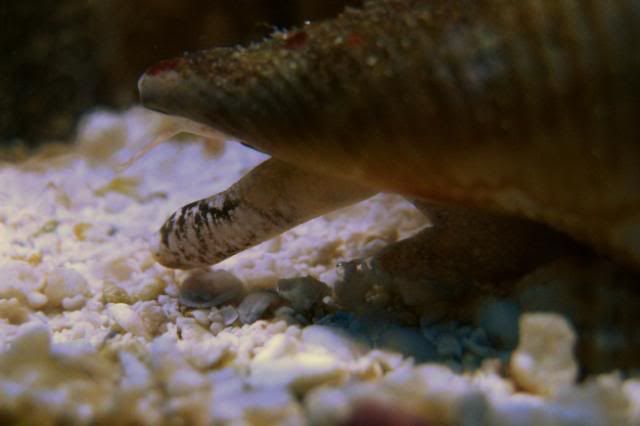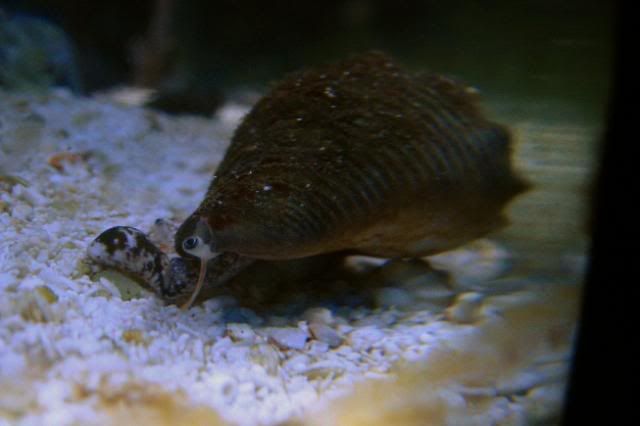But, all these swings are happening...every time, they get less and less, but they keep happening. Eventually, they slow and stabilize. What's left? A tank with limited denitrification and a whole lot of other stuff in the water. Who comes to the rescue and thrives? The next fastest growing groups...cyano's, single celled algae, protists, ciliates, etc. Then they do their little cycle thing. And then the turf algae. Turfs get mowed dow by all the little amphipods that are suddenly springing up cause they have a food source. Maybe you've boght some snails by now, too. And a fish. And the fish dies, of course, because it may not have ammonia to contend with, but is has water filled with things we can't and don't test for...plus, beginning aquarists usually skimp on lights and pumps initially, and haven't figured out that alkalinity test, so pH and O2 are probably swinging wildly at this point.
So, the algae succession kick in, and eventually you have a good algal biomass that handles nitrogen, the bacteria have long settled in and also deal with nutrients, and the aquarium keeper has probably stopped adding fish for a spell cause they keep dying and they started to visit boards and read books and get the knack of the tank a bit. They have probably also added abunch of fix-it-quick chemicals that didn;t help any, either. Also, they are probably scared to add corals that would actually help with the photosynthesis and nutrient uptake, or they have packed in corals that aren't tolerant of those conditions.
About a year into it, the sand bed is productive and has stratified, water quality is stable, and the aquarist has bought a few more powerheads, understand water quality a bit, corallines and algae, if not corals and other things are photosynthesizing well, and the tank is "mature." That's when fish stop dying when you buy them (at least the cyanide free ones) and corals start to live and grow and I stop getting posts about "I just bought a coral and its dying and my tank is two months old" and they start actually answering some questions here and there.
So, ecologically, this is successional population dynamics. Its normal, and it happens when there is a hurricane or a fire, or whatever. In nature though, you have pioneer speices that are eventually replaced by climax communities. We usually try and stock immediately with climax species. And find it doesn't always work. Now, the "too mature" system is the old tank syndrome. Happens in nature, too. That whole forest fire reinvirograting the system is true. Equally true on coral reefs where the intermediate disturbacne hypothesis is the running thought on why coral reefs maintain very high diversity...theya re stable, but not too stable, and require storms, but not catastrophic ones....predation, but not a giant blanket of crown of thorns, mass bleaching, or loss of key herbivores.
This goes to show what good approximations these tanks are of mini-ecosystems. Things happen much faster in tanks, but what do you expect given the bioload per unit area. So, our climax community happens in a couple years rather than a couple of centuries. Thing is, I am fully convinced that intermediate tank disturbance would prevent old tank syndrome.



